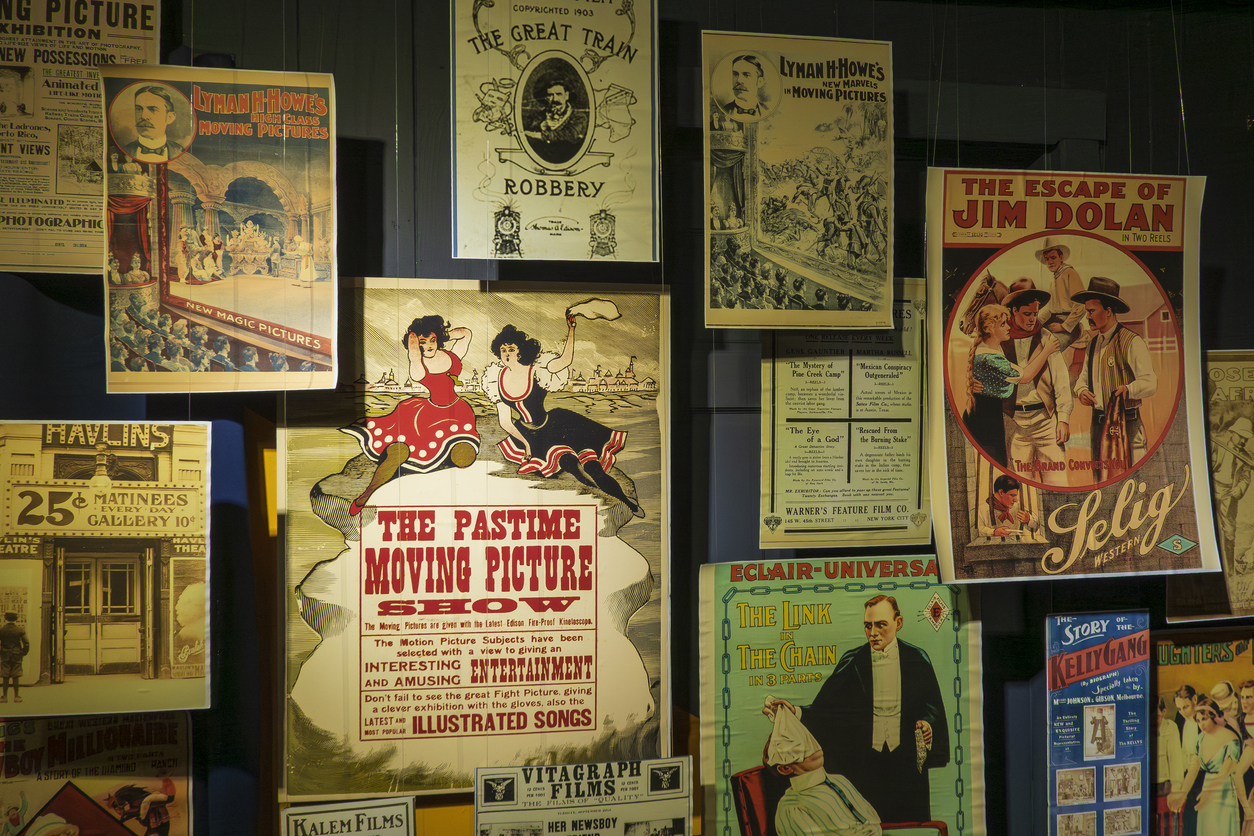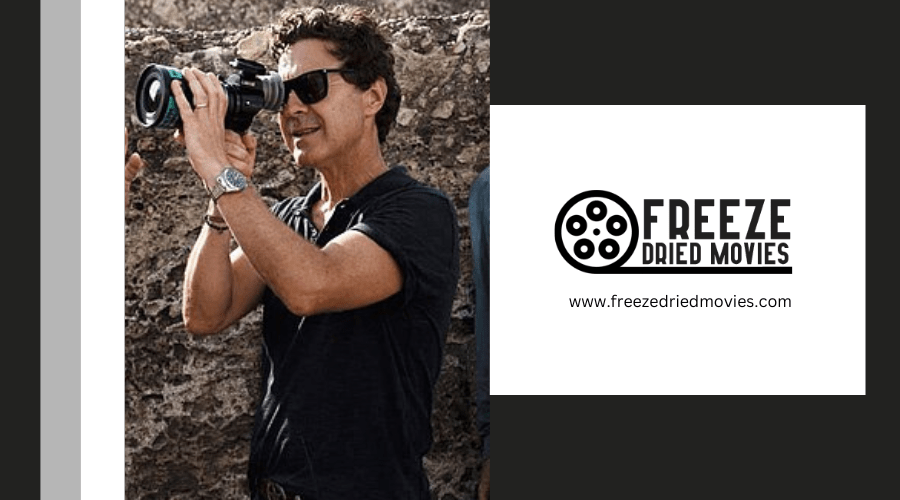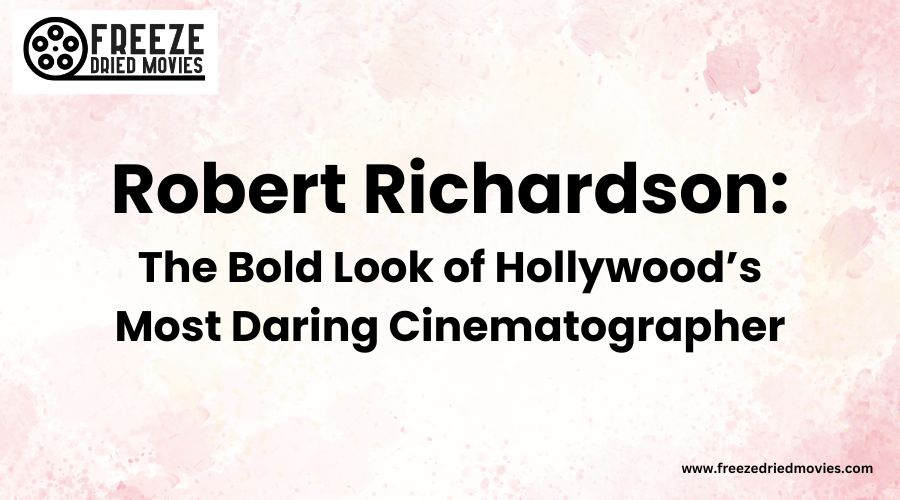Chung-Hoon Chung: the Korean Cinematographer Who Blends Surrealism With Emotion

Chung-Hoon Chung transforms cinema through his masterful blend of technical precision and emotional depth. You'll recognize his distinctive visual signature in films like "Oldboy" and "Decision to Leave," where he uses off-green lighting, deep shadows, and deliberate camera movements to create surreal yet intimate atmospheres. His long-standing partnership with director Park Chan-wook showcases how every visual choice serves character development. From Korean cinema to Hollywood success, Chung's influence continues to reshape how stories connect with audiences visually.
Key Takeaways
- Chung's signature visual style combines off-green and tungsten lighting with atmospheric smoke to create surreal, emotionally charged scenes.
- His slow, deliberate camera movements and immersive perspective shots pull viewers into characters' psychological states.
- Collaborations with Park Chan-wook showcase his ability to blend technical precision with emotional storytelling in films like Oldboy.
- Chung approaches each project by understanding characters' viewpoints, ensuring visuals serve emotional narratives rather than just aesthetics.
- His distinctive use of saturated colors and deep shadows creates a lingering unease that heightens emotional impact.
From Child Actor to Master Cinematographer: Chung's Early Career Journey
Though he's now renowned for his distinctive visual style, Chung Chung-hoon's path to cinematography excellence began at Dongguk University in Seoul, where he initially studied theater. During his university years, Chung directed three short films, developing the foundational skills that would later define his career. His talent emerged early when he made his cinematographer debut on the feature film Yuri while still completing his senior year.
Chung's career trajectory changed dramatically in 2003 when he collaborated with director Park Chan-wook on Oldboy. This partnership proved transformative, showcasing Chung's ability to capture raw emotion through surreal visual storytelling. The film's success catapulted him from student filmmaker to respected cinematographer, establishing his reputation for blending technical precision with emotional depth - hallmarks that continue to distinguish his work today. His journey exemplifies how hands-on experience in film school can translate to mastery of visual aesthetics that revolutionize modern cinematography.
The Artistic Philosophy Behind Chung's Visual Storytelling
While Chung's technical mastery emerged during his formative years, his distinctive artistic vision represents the true heartbeat of his cinematography. You'll notice how he meticulously balances visual aesthetics with serving the film's narrative, never allowing style to overshadow substance.
Chung approaches each project by first understanding the character's point of view, believing this insight essential for crafting the appropriate visual language. His signature use of off-green and tungsten light creates a subtle sense of unease, while his thoughtful color palettes enhance emotional resonance.
In thrillers, he employs deep shadows and saturated tones; for introspective stories, he shifts to washed-out grading.
What makes Chung exceptional is his philosophical commitment to finding the perfect equilibrium between innovation and familiarity, constantly adapting his techniques to best realize the director's vision. His work often features experimental techniques reminiscent of 1960s psychedelic horror films, using unconventional camera angles and bold color saturation to create an unsettling atmosphere.
Technical Mastery: Chung's Approach to Camera and Lighting
Despite his understated persona, Chung-Hoon Chung's technical prowess speaks volumes through his meticulous camera and lighting choices. You'll notice his preference for the 2.35 aspect ratio, where he masterfully combines hard backlight with soft fill lighting to create depth while maintaining visibility.
When shooting interiors, Chung blends off-green and tungsten light, adding atmospheric smoke to sculpt his compositions. He's committed to digital filmmaking, exclusively using Arri cameras paired with both spherical and anamorphic lenses to achieve his signature look.
Chung's lighting design isn't merely technical—it's purposeful storytelling. His slow, deliberate camera movements complement the natural, realistic aesthetic he maintains, especially in horror films. By incorporating subtle color shifts, he creates that slightly sickly sensation of unease that lingers with you long after the credits roll. His thoughtful approach to lighting draws inspiration from the chiaroscuro lighting techniques pioneered in 1930s cinema to establish mood and character dynamics.
The Park Chan-wook Partnership: A Creative Evolution
The collaboration between Chung-Hoon Chung and Park Chan-wook represents one of cinema's most fruitful artistic partnerships, spanning six visually arresting films that have redefined Korean cinema on the global stage.
What makes their partnership exceptional is their shared character-first approach—every lighting decision and frame composition serves the emotional journey of their protagonists. You'll notice their distinctive visual language evolves through masterpieces like Oldboy and Decision to Leave, where Chung's virtuosic lighting design and framing create psychologically charged atmospheres.
Their meticulous storyboarding process and preference for analog techniques minimize visual effects, letting their raw cinematic vision shine through. This deliberate methodology has elevated their collective work to influential status, inspiring filmmakers worldwide.
The Chung-Park collaboration exemplifies how technical brilliance and emotional storytelling can merge to create cinema that's both visually stunning and profoundly moving. Much like how the European art films of the 1960s proved audience readiness for complex cinematic expressions, Chung's work demonstrates that challenging visual storytelling can achieve both critical acclaim and audience connection.
Breaking Into Hollywood: Chung's International Success Story
Chung-Hoon Chung broke onto the international scene in 2013 with his Hollywood debut film "Stoker," marking a pivotal shift in his already distinguished career. After establishing himself as a preeminent cinematographer in South Korea, the thriller rebooted his presence in American cinema, with critics celebrating his technical mastery and distinctive aesthetic vision.
His Hollywood move opened doors to collaborate with directors like Edgar Wright and Andy Muschietti, greatly expanding his creative range. In 2017, the prestigious Academy of Motion Picture Arts and Sciences welcomed him as a member, cementing his global recognition.
This journey culminated in 2023 when he became the first Korean cinematographer inducted into the American Society of Cinematographers—a historic achievement that represents the pinnacle of his international career.
The Hallmarks of Chung's Distinctive Visual Style
Revered for creating otherworldly yet emotionally resonant compositions, Chung-Hoon Chung has developed a instantly recognizable visual language that transcends cultural and genre boundaries. His work in films like "Last Night in Soho" showcases his masterful use of contrast and deep shadows balanced with punchy and saturated colors that never sacrifice the natural and real qualities that make his horror work so effective.
Chung-Hoon Chung's visual poetry lies in balancing otherworldly compositions with raw emotional truth, never sacrificing authenticity for style.
You'll notice Chung's distinctive approach through:
- Hard backlighting paired with soft fill to sculpt dimension
- Atmospheric smoke that shapes and defines light beams
- Strategic color mixing of off-green and tungsten for subtle unease
- Digital Arri cameras typically shooting in 2.35 aspect ratio
- Perspective shots that immerse viewers in the character's point of view
These stylistic flairs aren't mere technical choices—they're purposeful tools that heighten storytelling across genres.
Creating Atmosphere Through Color and Composition
Masters of visual storytelling understand that atmosphere isn't just created—it's carefully constructed. Chung's approach to this construction is masterful, utilizing off-green and tungsten lighting combinations that immediately establish an unsettling mood.
You'll notice his color grading technique shifts between desaturated palettes and vibrant hues, reflecting characters' emotional journeys. Through shallow depth of field and tight framing, he isolates subjects, intensifying feelings of intimacy or isolation. The strategic placement of atmospheric smoke, coupled with precise lighting, sculpts on-screen space with a dreamlike quality that's distinctly Chung.
What's particularly striking is how seamlessly his work shifts between visual beauty and overwhelming imagery, mirroring characters' psychological states. This deliberate visual oscillation creates an atmosphere that doesn't merely complement the narrative—it becomes an essential character itself.
Genre Versatility: Adapting Visual Language Across Film Types
Chung-hoon's adaptability is most evident in his diverse portfolio:
- Crafting clinical austerity for "Sympathy for Lady Vengeance"
- Building intimate character moments in "Stoker" through precise framing
- Enriching "The Handmaiden" with lush period details and lighting
- Energizing "Last Night in Soho" with vibrant, kinetic visuals alongside Edgar Wright
- Seamlessly blending realism with surrealist elements across genres
This chameleon-like ability to create distinct visual identities while maintaining his signature touch has established Chung as one of today's most innovative film artists.
Behind the Scenes: Chung's On-Set Process and Collaboration Style
While many cinematographers impose their signature style regardless of project, Chung-hoon Chung approaches each film as a unique artistic partnership. You'll find him collaborating intensely with directors to storyboard scenes and develop visual language that serves the narrative's specific needs.
Chung's working relationship with filmmakers prioritizes adaptability over personal aesthetic. He'll utilize single-camera setups when possible for efficiency, but won't hesitate to deploy multiple cameras to capture authentic performances or accelerate production timelines. His distinctive lighting designs—often blending off-green with tungsten—create the perfect atmosphere for mystery and tension.
What sets this cinematographer apart is his commitment to character's point of view. Rather than forcing a predetermined style onto every project, Chung remains flexible, working with directors to craft cinematic language that authentically reflects each film's emotional and tonal requirements.
Global Influence: How Chung's Work Has Shaped Modern Cinematography
Few cinematographers have transcended cultural boundaries as effectively as Chung-hoon Chung, whose visual language has reshaped contemporary filmmaking around the world. As the first Korean director of photography inducted into the American Society of Cinematographers in 2023, his technical mastery has earned him unprecedented recognition.
His cinematography style bridges East and West, influencing filmmakers across continents. Collaborations with Park Chan-wook created visual patterns other cinematographers now study. His balance of surrealism with emotional storytelling has redefined genre expectations. His work demonstrates that technical precision can coexist with raw emotion. Films like Oldboy and The Handmaiden serve as masterclasses in visual storytelling.
You'll notice Chung's global influence in countless films that attempt to capture his distinctive blend of hyperrealism, emotional depth, and technical virtuosity—a demonstration of his enduring impact on modern cinema.




